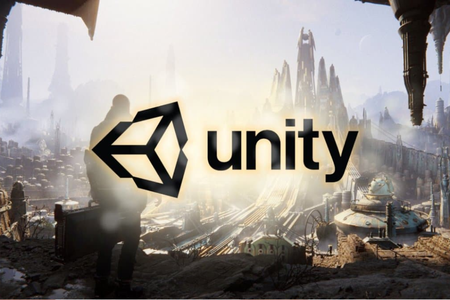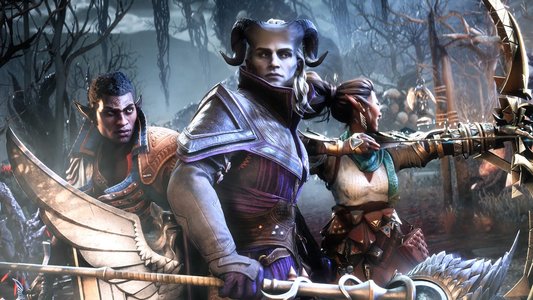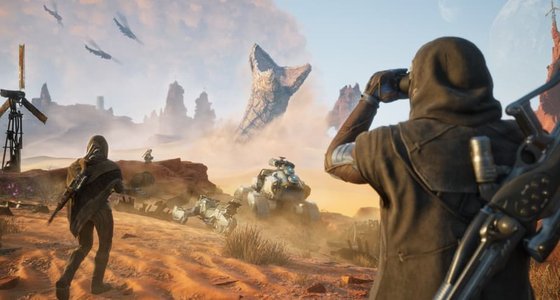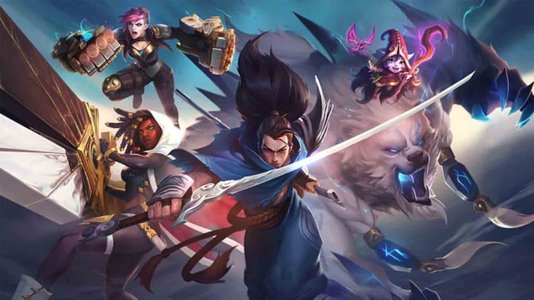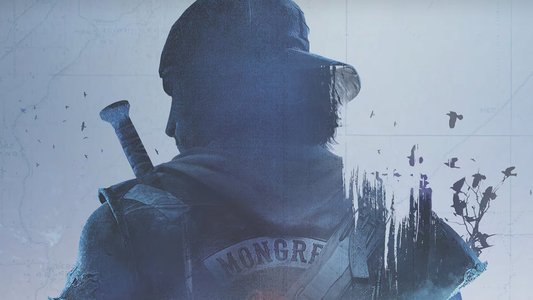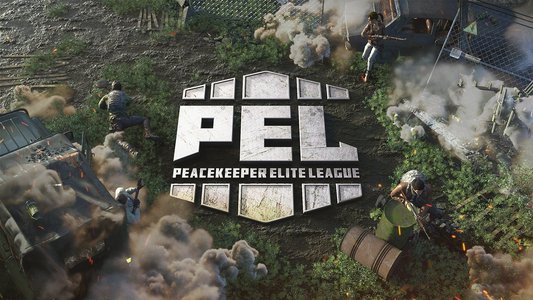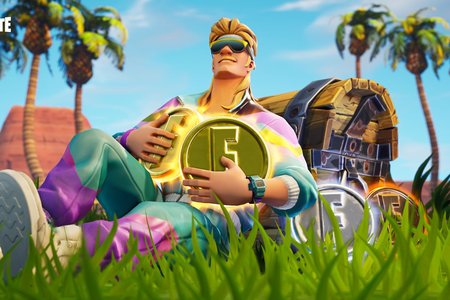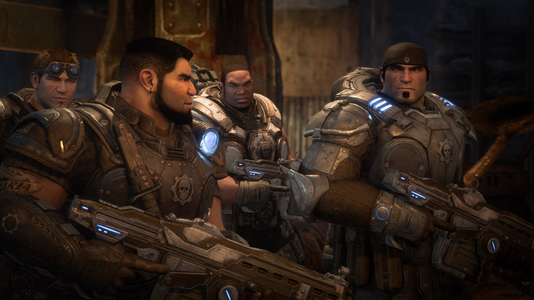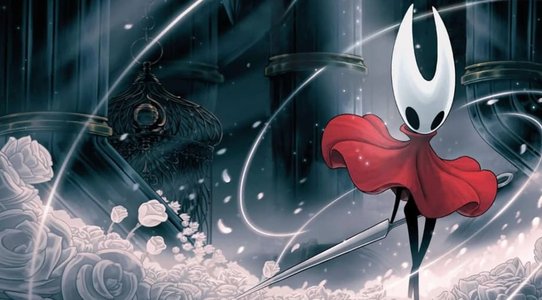“I have had such a superb time creating this project. I can barely sleep. I get up early and can’t wait to put new things into the game. I love making games and that is almost all I do now.”
David Brevik, creator of Diablo and Diablo II, has been away for games for some time due to his work as CEO of Gazillion Entertainment -- work that came to an end in 2016 when he left the company.
“After I left being the CEO at Gazillion I knew I wanted to get back to making the games," Brevik says. "When you are the boss of a company with 100+ people you don’t have time to make games, instead you run a company and can give some feedback on the products. It was important to me to get my hands dirty again and start making a product. That is my passion.”
The developer has returned to his Stygian action-RPG roots with It Lurks Below, a survival game that draws from his past works with Diablo, but also draws from many different elements that allow the developer to head into some uncharted territory for himself. All alone, as well, as Brevik (operating under the name of Graybeard Games) has decided to tackle the entire game solo, putting years of development experience to work in crafting something for himself after years of guiding a company to do it.
“Being the sole developer on a project has been a very unique experience," says Brevik. "I didn’t really set out to be the sole developer. I thought I would make a small (five-ish) person team to make a game, but in the end, I decided to push my limits and try doing it all.”
Diab-Below
It Lurks Below is Brevik’s new project, drawing from some interesting elements the developer has seen in survival games, games that feature random generation, and horror as well, mixing discovery and a personal touch that makes the game the player’s own. Brevik is mixing and mingling all these influences with his past experience creating games like Diablo.
"I didn’t really set out to be the sole developer...but in the end, I decided to push my limits and try doing it all."
Players are tasked with creating their own character from several different classes, then setting out to dig their way down to a colossal, sprawling dungeon, battling through its randomly-generated halls using randomly-generated tools, striving to survive and thrive despite the difficult odds. If players wish to live long in this world, they may also wish to make a few return trips to their base to regroup and fashion some helpful things that will help them return to fight refreshed and rearmed.
These survival elements mark new territory for Brevik, and were part of what the developer really wanted in his new project.

“I think the thing that drew me in the most was the play experiences I had while playing other survival games like Don’t Starve, Rim World, and Terraria," Brevik says. "I really enjoyed trying to create a base, growing food, and in some cases, building a community. When I started thinking about creating a new game, I knew that I wanted to take a lot of my previous experience and add something new and interesting to it, so crossing it with these survival aspects seemed like a fun fit.”
These elements turned out to be a comfortable fit with the developer’s love of the RPG loop he’d used with Diablo.
“After getting the prototype working, I put in some of the new survival mechanics to my well-established RPG loop I’ve used many times and it worked even better than I thought it would,” says Brevik. “I think that breaking up the action with a return to your base and taking the time to farm, harvest, and do other activities is an important respite to the constant exploration and action of the netherworld. It creates a unique balance that has a relaxing, soothing effect on the game.”
Diablo’s horror-inspired mood, with its gloomy world and dungeons filled with frightening monsters, would also be reflected in the developer’s new work.
“The ambient sound is creepy. The monster grunts and calls are scary. It is dark, and you can’t see. These are all done on purpose. I love horror. I watch horror movies, play horror games and I’m most captivated when a game has that unsettling feeling,” says Brevik.
"What makes a game interesting to me is when the monsters are in the dark. When they come out of that dark spot and surprise you."
“What makes a game interesting to me is when the monsters are in the dark. When they come out of that dark spot and surprise you. When you can’t see what you are up against until it is right upon you. It is important to me to have a horror element because the monsters and your overall task should be scary. This is a terrifying adventure you are on and you are up against demons. It isn’t meant to be a light-hearted romp through grassy fields.”
It's especially interesting to see how Brevik is building upon the character class system in It Lurks Below, drawing from his wealth of experience within the action-RPG genre.
“The way the classes work is a bit of a cross between several different games I’ve worked on in the past," Brevik explains. "First, your skills are items that you can activate or use. I call them ancient items. When you choose a class, you are given one of these ancient items every five levels through level 25 (5 total). Each one of these items has an upgrade feature that allows the skill to become more powerful. You are given points when you level up to increase the rank of these ancient items. This is like Diablo II in that you have points to spend in your skill tree, but in this case, you use the points to upgrade items.”
Devs should note that Brevik seems to prize flexibility within this class structure, going so far as to design special items which can give players access to skills outside their chosen class.
“It is a bit like the original Diablo in that these ancient items can be found in the game and can come from any class," he explains. "This allows you to create a hybrid class using different skills from other classes. But with limited skill points, there are only a few of these items that you can max out, so you need to choose wisely. Because of this strange system, it will be very difficult to refund skill points and it will also be difficult to guarantee a specific build because sometimes you might find a great item for your kit and sometimes you won’t. I may change this system before the game is done, but it is how it works currently.”
The bottomless appeal of random caverns
Brevik is also building upon the Diablo formula and hoping to create something wholly new with It Lurks Below, through the use of random generation for everything within the game. Players can never know what items or locations they will come across in their journey, creating a new game for the player each time they choose to march through the game’s creepy caves.
“I’ve designed the game so that there are many ways to play; from different classes to a randomly generated world and items to skills that are found," says Brevik. "This encourages people to play over and over and to keep it fresh, having a randomly generated experience is the best way to go. There are surprises around every corner and it is different each time I play. It creates incredible replayability and new challenges each time you start. If you enjoy the game, it will be incredible value because you can play hundreds of hours.”
.jpg/?width=646&auto=webp&quality=80&disable=upscale)
Making this into a compelling experience will always be a challenge, according to the developer, but it’s one he’s been working to overcome (and enjoying doing so along the way). “You can create interesting experiences out of randomly generated levels, but they won’t be as interesting as hand-crafted experiences. However, it is much more entertaining to me to have new experiences each time you play instead of the same experience over and over.” says Brevik.
“I’ve always enjoyed making randomly generated worlds and items and this seemed like a fun new challenge.” he continues. “I had not done much random level generation from the side instead of top-down. I knew that I wanted to create organic cave-like structures and I ended up doing quite a bit of research on how others have achieved that look in the past.”
No tags.









